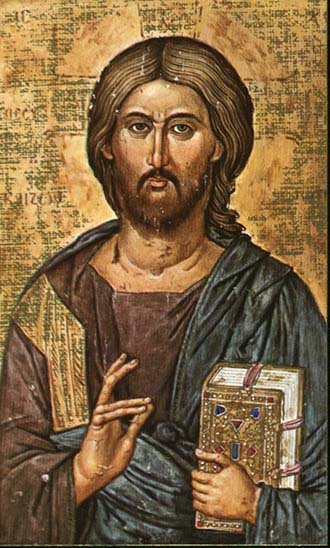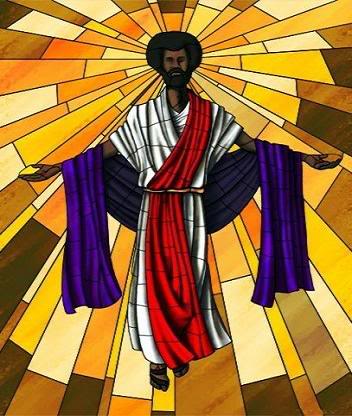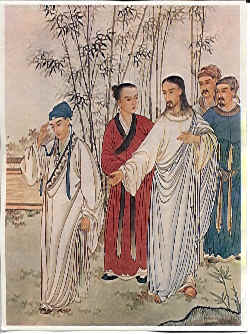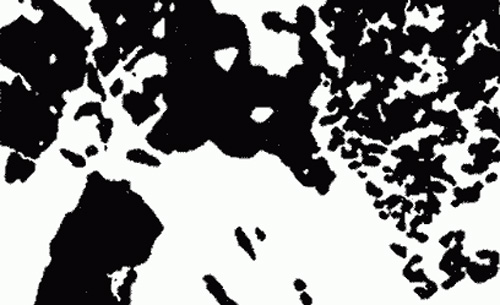BioLogos is currently doing a series with the strapline: “A continued examination of the genetic evidence that God designed humans by way of common descent.” This is actually more an attempt by Dennis Venema to demonstrate the truth of a Neodarwinian account of human origins than simply an appeal to common descent (still less to divine design), but in fairness it would seem that the description is the result of sub-editing as it does not occur in the articles themselves.
Nevertheless, the agenda is typically that of BioLogos: Christians really need to accept evolution, as currently constituted or … Face the Consequences. But as we’ve often pointed out here, for God to create man through common descent is trivial and uninteresting in theological terms: the significant thing is that he created man by conscious intent. I visit an old friend with no scientific background and mention that I blog about evolution, and she shrugs and says God can create however he likes. I teach Genesis 1 in a new home group and nobody worries much either way about common descent – but the truth that mankind bears God’s image is non-negotiable.
The creation of mankind “after the image of God” in Genesis 1 can, like the rest of the chapter, be interpreted mainly functionally. The role of man as God’s representative in his creation-temple is what is largely in the author’s mind. But taking Scripture as a whole, the concept of the divine image is a deeply ontological theme, developed in a number of contexts. It’s quite an important New Testament motif, in particular.
I’ve pointed out before how Athanasius was among the first after the New Testament writers to link Christ, the true image of God (Col 1.15, Heb 1.3) with mankind in his role as Creator: “all things were created by him and for him.” Meditating on passages like John 1.3-4 & 9, Athanasius understood that our being created, alone of all beings, after the image of God implies a close ontological relationship with Christ himself, the original Image.
 Philip Edgcumbe Hughes examines this whole theme in great detail in a mainly excellent 1989 book, The True Image. To begin with he traces its strong continuity through theological history, citing for example Thomas Aquinas’s distinction between Christ as the image of God and mankind as, in contradistinction, after the image of God. We have been created, in other words, in imitation of the image of Christ, in whom dwells all the fulness (pleroma) of God.
Philip Edgcumbe Hughes examines this whole theme in great detail in a mainly excellent 1989 book, The True Image. To begin with he traces its strong continuity through theological history, citing for example Thomas Aquinas’s distinction between Christ as the image of God and mankind as, in contradistinction, after the image of God. We have been created, in other words, in imitation of the image of Christ, in whom dwells all the fulness (pleroma) of God.
That can be seen in a negative way, in the sense that we are only “a pale reflection” of the eternal Son. But it is actually a hugely positive view of our creatureliness as people, which resonates with the big themes of Scripture. For only in our resemblance to Christ the Creator does the commission to rule and subdue in Genesis 1 make much sense – to be Christ’s viceroys on earth, in order to fulfil his purposes for the world. As I’ve discussed in previous posts, those purposes would seem to have included from the start the transformation of man into full conformity with the Logos through obedience, hence gaining all the freedom of dwelling within God’s will. In the wake of that would have come the completion of the creation aim of bringing all things together in God’s order – which we may picture in the biblical way as the “rending of the heavens”, as heaven (God’s dwelling) and earth (his footstool, man’s realm) become one.
In the event, the sin of Eden prevented that. I would suggest this is a large part of the “vanity” to which creation is said to be subjected in Romans 8, and the sense in which it longs for “the glorious liberty of the sons of God”: it has been waiting far longer than it anticipated to be God’s dwelling place. It is instead through the Incarnation that Jesus Christ, as perfect man, himself completes the creation task. He not only fulfils that cosmic purpose through his obedience, as firstborn from the dead and herald of “a new heavens and a new earth, the home of righteousness” – but he restores fallen mankind in his role as the new Adam, the bringer of God’s grace to sinners.
Hughes (not as an innovator, but as a collator, of theology) points out how the ontological connection between the Son as God’s image, and mankind as created in that image, provides a natural affinity between God and man. That is one sense in which “he came to those who were his own”, and it shows how the gap between a transcendent God and mere humanity is not as unbridgeable as the philosophers have complained from ancient times until the present. Humanity was always Christ-shaped, and the Son was a Mediator in the business of creation, long before he became one as a High Priest, to deal with sin.
 No serious theologians have been foolish enough to attribute humanoid features to the pre-incarnation Logos, but our close ontological links to him, as explained above, show why they were always keen to affirm at least the suitability of the human form to our creation after the divine image. In the best theology people have always been perceived as a created unity, whether that is in the idea of God’s breath animating a body made of “dust” so that it becomes a “living soul”, or in the Thomist adaptation of Aristotelian hylemorphism. We are in Christ’s image as a whole, fractally as it were, and not in some isolated details.
No serious theologians have been foolish enough to attribute humanoid features to the pre-incarnation Logos, but our close ontological links to him, as explained above, show why they were always keen to affirm at least the suitability of the human form to our creation after the divine image. In the best theology people have always been perceived as a created unity, whether that is in the idea of God’s breath animating a body made of “dust” so that it becomes a “living soul”, or in the Thomist adaptation of Aristotelian hylemorphism. We are in Christ’s image as a whole, fractally as it were, and not in some isolated details.
The idea of a merely animal body animated by an eternal soul entered the discussion through Platonism, and reached its apex, perhaps, in the so-called Cartesian dualism of the last four centuries. The ghost, it is held, is the important bit – the machine can be anything.
Only by having that idea that the “real us” is separate from the body, it seems to me, can we feel comfortable with the concept of our bodies as more or less accidental details of our spiritual humanity. The Enlightenment emphasised the quintessential human quality as “reason” (quite narrowly conceived compared to older views of reason), and so in theistic evolution there is often something of an assumption that by adding reason or intelligence to any old body, God would render it human. It’s not a big step from there to envisaging intelligence evolving naturally, resulting in those ideas of God “accepting” an intelligent mollusc or reptile, produced “naturally” by evolution (ie purely by unguided secondary causation), as being just as human as we are. Perhaps God’s image simply means his graciously entering into relationship with such a species, if and when it might emerge.
But the discussion above shows that, once one is thinking christologically, such ideas really won’t wash. There is, of course, no intrinsic reason why the human body should not have been formed by common descent through an evolutionary process. After all Michaelangelo’s David emerged from a piece of marble and is an iconic image of the human form. There are several good philosophical reasons, mind you, for doubting that the entirety of the human mind and spirit could be so evolved – though perhaps, invoking certain unconventional versions of biology and physics, such might be possible.
 But the big spanner in the works is Darwinian evolution in any form which would currently be seen as scientifically orthodox. Regular readers should be entirely familiar with the fact that Darwin’s theory was not novel because it was evolutionary – a century of transformist theories preceded him. The innovation was the philosophically surprising idea that such transformations could occur open-endedly without goals, by simple secondary causes. It was not just that God needn’t be involved, but that if he were, the process would no longer be Darwinian. An atelological process cannot move towards God-given creative goals, by definition.
But the big spanner in the works is Darwinian evolution in any form which would currently be seen as scientifically orthodox. Regular readers should be entirely familiar with the fact that Darwin’s theory was not novel because it was evolutionary – a century of transformist theories preceded him. The innovation was the philosophically surprising idea that such transformations could occur open-endedly without goals, by simple secondary causes. It was not just that God needn’t be involved, but that if he were, the process would no longer be Darwinian. An atelological process cannot move towards God-given creative goals, by definition.
Such goals would include the pattern seen in the Creator Son, a creature in the image of the Image of God. As we saw in a previous post, a pattern that forms a recognisable image by chance is not actually an image at all, but a case of pareidolia. To be created in the image of something is to be conformed to a pre-existing idea – or in the case of humanity, to an eternally existing Logos.
So to build a case arguing that the human race must be a product of Neodarwinian processes, and that at the same time we are made in God’s image, is on the face of it a flat contradiction. It solves no theological problems at all, but simply compounds them to the point, possibly, of incoherence. There is an absolute requirement, if one wants to remain within Christian doctrine, to explain not only how God can design without design, or purpose without purpose, but how nature can create an image without being allowed access to the original.
If that explanation cannot be achieved – and nobody at BioLogos or elsewhere seems to have made much of a fist of it – one has to choose between abandoning the doctrine of our creation in God’s image, or abandoning the ateological mechanism at the root of ones science.

